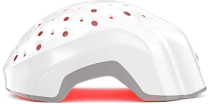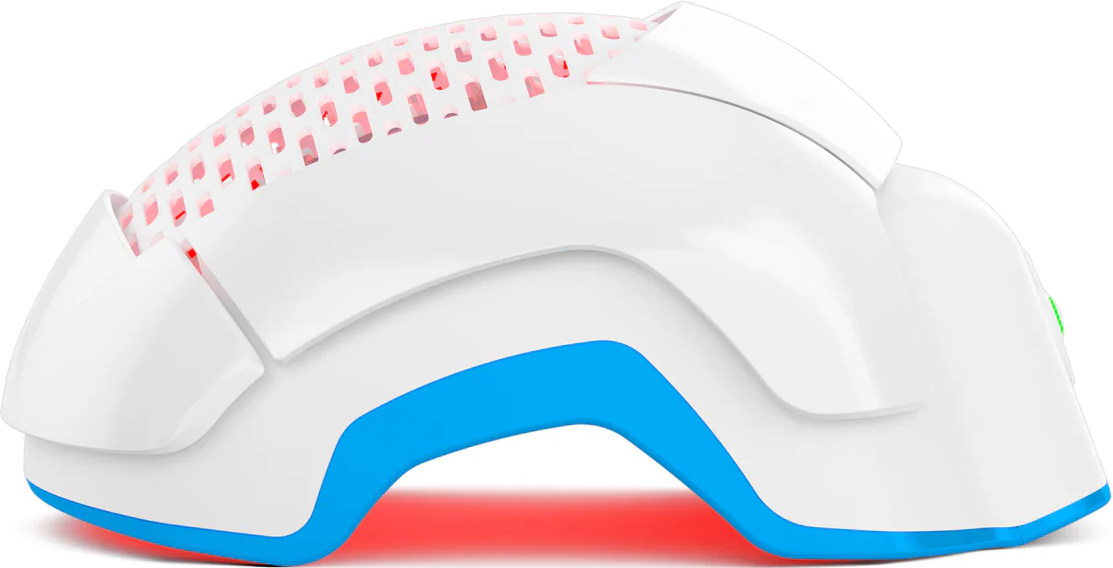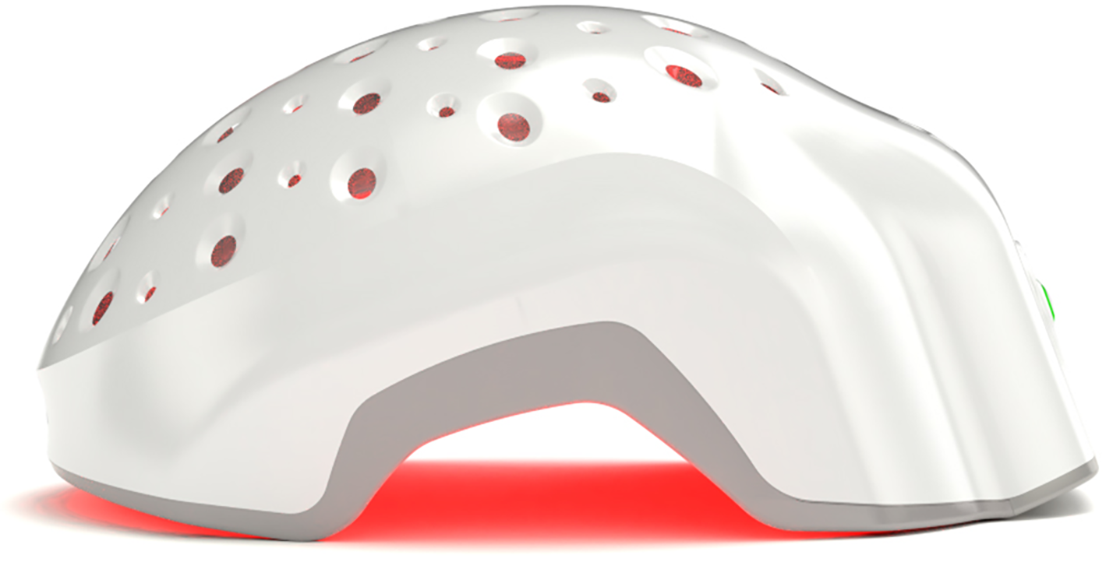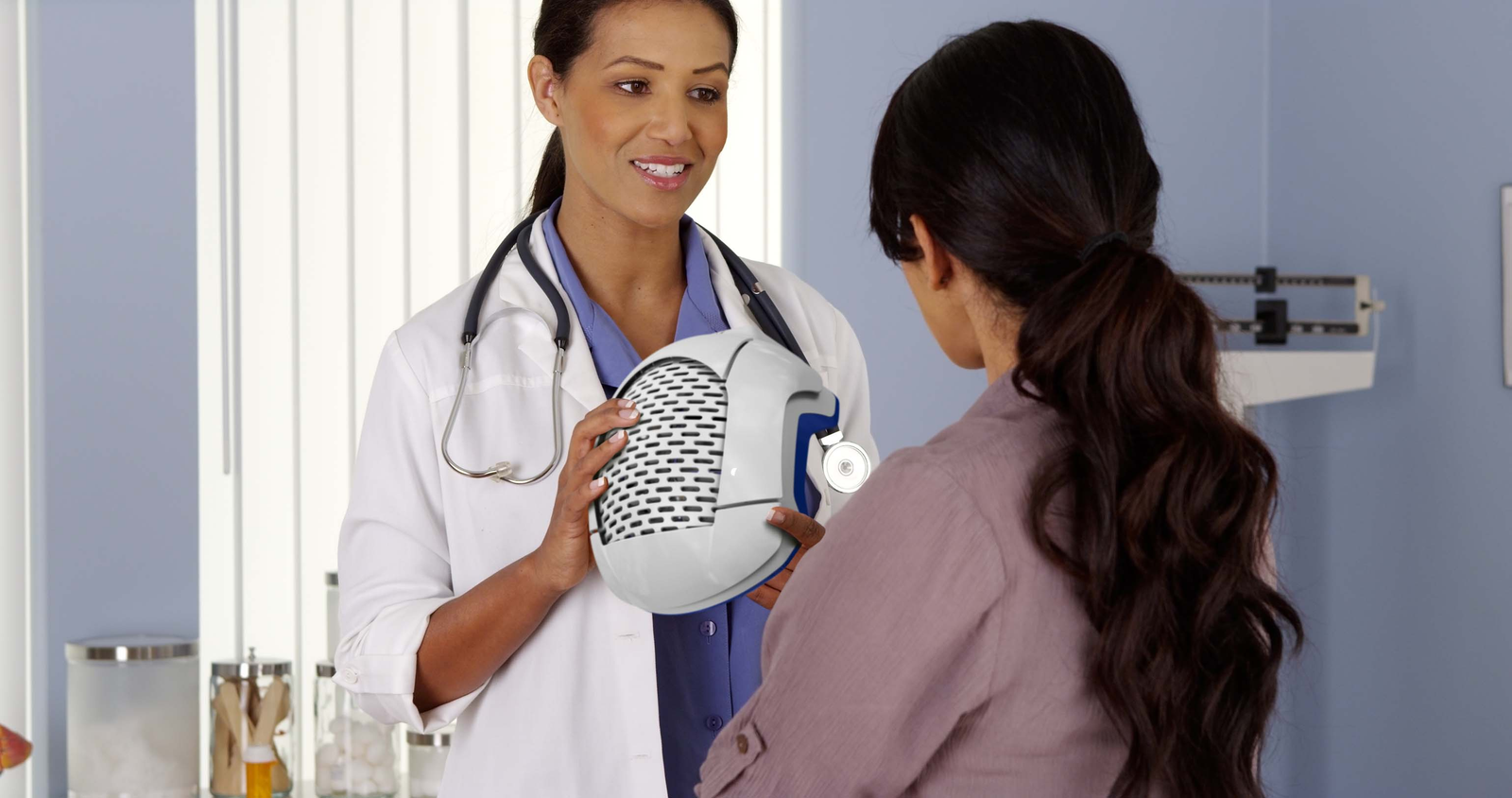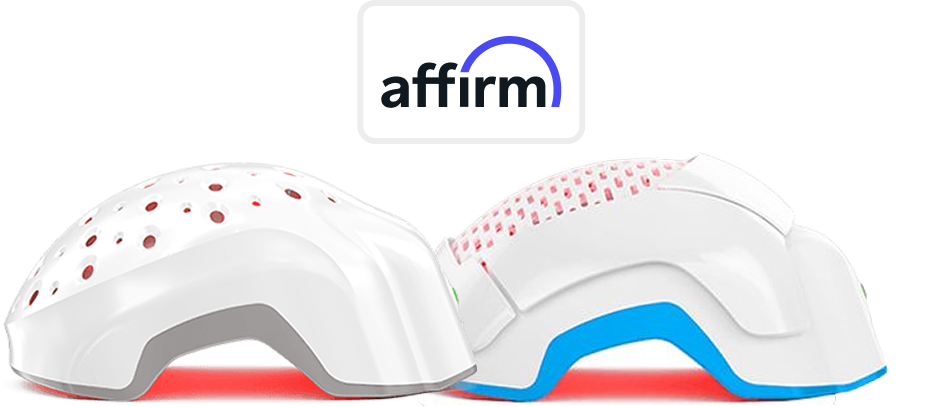Hair loss isn't always just about what ends up in your comb or clogging the shower drain – sometimes, it's your hairline trying to tell you something. When the signs of a receding hairline start creeping up, they can be easy to overlook – until they’re not. And let’s be honest, once you notice that first sign, it’s all you can see.
So, how do you tell if your hairline is simply "maturing" with age or actually receding?
It’s all in the details. Whether it's the subtle thinning at your temples or the M-shaped hairline making its grand entrance, these indicators shouldn't be ignored.
Recognizing these early signs of receding hairline can make all the difference in preserving your hair – and your peace of mind.
In this blog, we’ll break down the five signs you need to keep an eye out for so you can stop the receding in its tracks. Because when it comes to hairlines, early action is everything.
Understanding Receding Hairline
A receding hairline is exactly what it sounds like: your hairline is retreating, backing up from where it used to be. The hair at the front of your scalp starts to thin and move further back, typically starting at the temples and progressing toward the crown. This change doesn’t happen overnight; it's part of a gradual process known as hairline recession.
The most common culprit is androgenetic alopecia (also known as male or female pattern hair loss). And though this condition is more noticeable in men, women aren’t exempt from it either. A receding hairline often begins subtly, so catching these changes early is key to preventing more severe hair loss. Understanding the stages of a receding hairline can help you recognize the difference between a naturally maturing hairline and something more concerning.
So, if you find yourself repeatedly asking, "Was my hairline always this high?" it might be time to pay closer attention.
Are Receding Hairline and Mature Hairline the Same?
Short answer: nope.
A mature hairline and a receding hairline are two very different hair stories. A mature hairline is like your hair’s natural way of "adulting." During your late teens to mid-20s, your hairline might move back about half an inch to an inch – that's completely normal. It stops there and stays put, like it's found its new home and is quite content to stick around.
A receding hairline, however, is an entirely different ballgame. It’s more aggressive and relentless, moving beyond the “mature” point and continuing its retreat over time. And this progression can be one of the early signs of a receding hairline leading to pattern baldness or androgenetic alopecia.
Diagnosing a receding hairline early on can make all the difference – unlike a mature hairline, which will happily settle down, a receding hairline doesn't know when to quit.
5 Early Signs of a Receding Hairline
The early signs of receding hairline are the ultimate red flags in hair health. If your hairline is moving up, changing shape, or shedding excessively, it might be trying to tell you something. Paying attention to these clues early can make all the difference between slowing down hair loss or letting it go unchecked. Here are five signs of a receding hairline that you should not overlook:
1. Hairline Shifting Higher
One of the first and most common signs of a receding hairline is when your hairline starts shifting higher on your forehead. It's like your forehead is staging a hostile takeover. This often starts as subtle thinning at the temples and can quickly become more noticeable as the hairline pulls back, making your forehead look more prominent.
While hairline shifts can naturally happen with age, significant upward movement, especially if accompanied by thinning hair, can be an early indicator of male pattern hair loss. And don't assume this is just a “getting older” thing – hairlines can start receding as early as in your 20s or 30s.
2. M-Shaped Hairline
The M-shaped hairline is one of the more classic early signs of a receding hairline. It's characterized by hair loss that recedes further on the sides, creating a peak at the center of your forehead. This shape often starts gradually, but over time, it can become more pronounced, especially in those with a genetic predisposition to hair loss.
This is particularly common among men, though some women may also notice a subtle M-pattern forming as they experience hairline recession. If your hairline is heading in an M direction, it’s a sign to take action sooner rather than later.
3. Hair Thinning at Temples (and Widening Part Line)
Hair thinning at the temples is one of the first signs that your hairline might be in retreat. For men, this often leads to a receding hairline or M-shaped pattern. But women aren’t immune here either – in fact, thinning at the temples can also signal the start of hairline changes for women. Alongside temple thinning, women commonly experience a widening part line, where hair becomes sparse along the natural part, creating a less dense look.
Unlike men, who typically notice receding hair that moves back evenly from the front, women often see more diffuse thinning across the top of the scalp. The temples and part line may become more noticeable as hair density decreases gradually. Keeping an eye on these changes can help both men and women take early action, from lifestyle adjustments to treatment options that can help slow down or even reverse the process..
4. Uneven Hairline
A healthy hairline may not be perfectly straight, but it shouldn't be wildly uneven either. If you notice one side of your hairline creeping up faster than the other, or if your hairline has started looking irregular and patchy, this is a sign that something more than a “bad hair day” is going on. An uneven hairline can indicate that hair follicles are miniaturizing – a process that weakens hair and leads to more pronounced hair loss on one side.
And while some asymmetry is normal, a significant difference warrants closer inspection and perhaps a visit to a hair loss specialist.
5. Increased Hair Shedding
Everyone sheds hair daily – about 50 to 100 strands, to be exact. But when that number starts to look more like 200, it's time to ask some questions. Excessive shedding is often an early sign of a hairline recession and can result from hormonal imbalances, stress, or the onset of androgenetic alopecia. Pay close attention to where you're finding the most hair. Shedding that occurs mainly around the forehead or temples is a strong indicator of a receding hairline.
Also, don’t just focus on the quantity – if the hair you’re losing looks shorter or finer than usual, it might mean those hairs are in their final stages of thinning out.
Also Read: Are Hair Shedding and Hair Loss the Same Thing?
How to Treat Receding Hairline
When it comes to treating a receding hairline, one truth stands out: early action matters. There's no magic pill or one-size-fits-all remedy, but several effective hairline restoration treatments are available that can help slow down hair loss, regrow hair, and keep your scalp in top shape.
If you're starting to see those first signs, from thinning hair at the temples to an M-shaped hairline, here’s what you can do.
1. Topical Treatments: Minoxidil®
Minoxidil is a name you'll hear often when talking about hair restoration. An FDA-approved topical treatment, minoxidil works by increasing blood flow to hair follicles, potentially boosting their size and extending the growth phase. Whether you're seeing the first signs of hair thinning or already dealing with a receding hairline, applying minoxidil regularly to affected areas can help maintain density and promote regrowth.
Keep in mind, however, that results vary, and consistency is key – you’ll need to use it as directed to see any noticeable improvement.
2. Oral Medications: Finasteride®
Finasteride is another popular treatment for those battling a receding hairline. This oral medication targets Dihydrotestosterone (DHT) – a hormone linked to hair loss in both men and women. By blocking DHT, Finasteride helps to prevent the miniaturization of hair follicles, which in turn can slow down hairline recession and support regrowth. It’s typically prescribed for male pattern baldness, but it can be an effective choice for hairline restoration across the board.
Important Note: Finasteride should not be used by pregnant women or women trying to conceive, as it may cause harmful side effects to a developing fetus. Additionally, it’s best to discuss this treatment with a healthcare professional, as it comes with potential side effects, including hormonal changes.
3. Platelet-Rich Plasma (PRP) Therapy
PRP therapy may sound complex, but it’s a straightforward and effective option. The process involves drawing your blood, processing it to extract platelets, and injecting these growth factor-packed platelets into your scalp. The goal is to stimulate and boost hair follicles to enhance hair thickness and strength. PRP is commonly used for hairline restoration and has been shown to support hair growth when combined with other treatments like Minoxidil. This non-surgical option offers promising results, especially for those catching the signs of receding hairlines early.
4. Lifestyle Changes
Before diving into the more intensive treatments, it’s always wise to address any lifestyle factors contributing to hair loss. A well-balanced diet packed with hair-friendly nutrients like biotin, zinc, and omega-3 fatty acids can work wonders for your scalp environment and overall hair health, though it’s important to note that these nutrients are not clinically proven to directly stimulate hair growth. Instead, they support a healthy scalp, creating a foundation for other treatments to work more effectively.
Additionally, scalp care shouldn’t be overlooked – gentle cleansing and regular scalp massages can improve circulation and encourage healthy hair growth. Reducing stress is another biggie, as stress has been linked to hair shedding (thanks, cortisol!). Incorporating relaxation techniques like meditation, exercise, or simply prioritizing downtime can help slow down hairline recession.
Also Read: How to Perform Scalp Massage for Hair Growth?
5. Low-Level Laser Therapy (LLLT)
Among hairline restoration treatments, Laser Phototherapy (LPT), often referred to as Low-Level Laser Therapy (LLLT), is gaining popularity for its effectiveness in stimulating hair regrowth. LPT uses specific light wavelengths that penetrate the scalp to stop hair loss and promote new hair growth. This non-invasive approach increases blood flow to hair follicles, enhancing their ability to grow thicker, healthier hair.
Laser hair growth devices like Theradome can be used at home, making it a flexible option for those looking to improve their hairline without more intensive procedures. Research supports LPT for boosting hair density and supporting hairline recovery, giving it a rightful place in your hair health regimen.
You can also get rid of your receding hairline temporarily by following easy tips and tricks to hide receding hairline.
Conclusion
A receding hairline can be a sign of hair loss, but the sooner you catch it, the better your chances are of managing it effectively. Recognizing early signs like a shifting hairline, thinning at the temples, and uneven patterns will help you take proactive steps. And with so many treatment options available, it’s never too late to give your hairline the care it needs. Keep an eye on those strands – your hairline will thank you for it.



